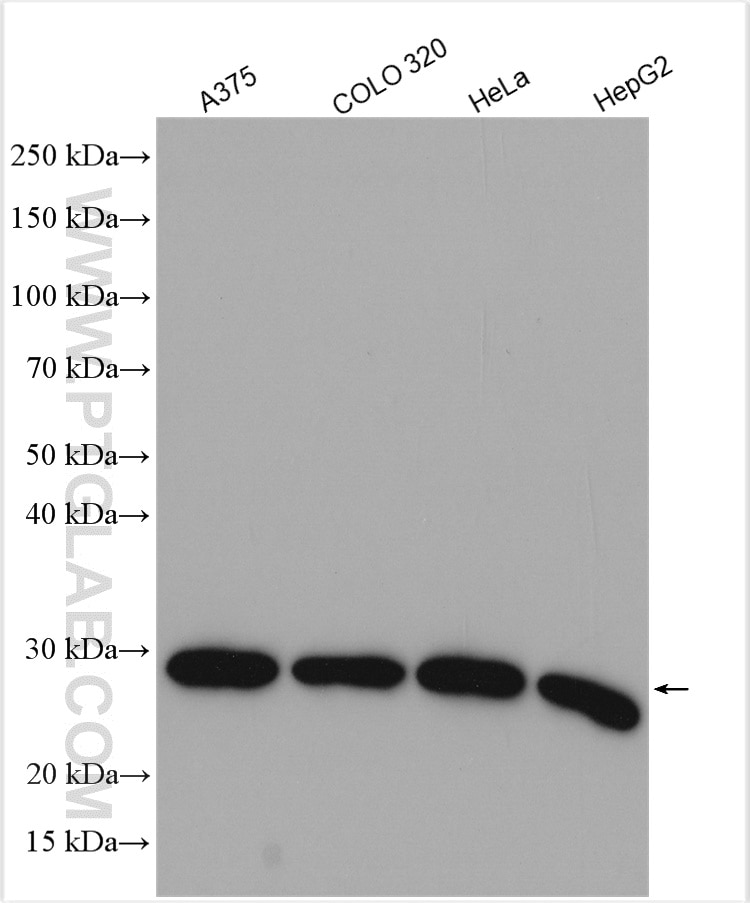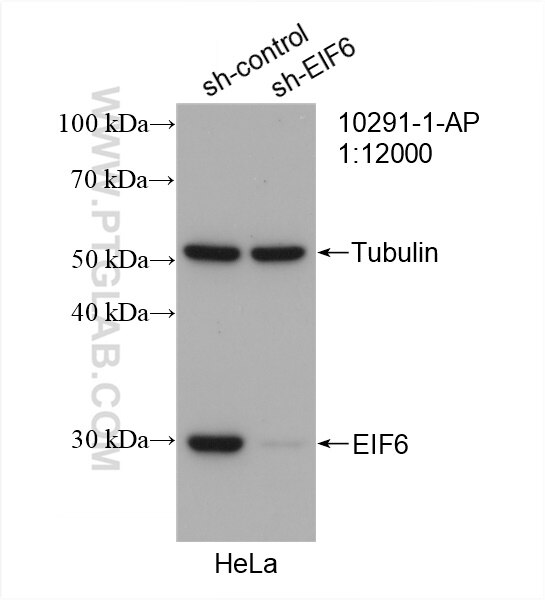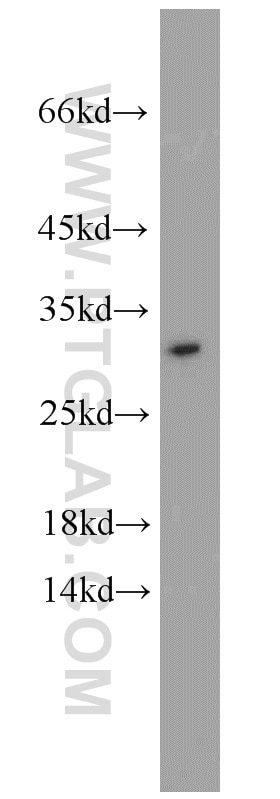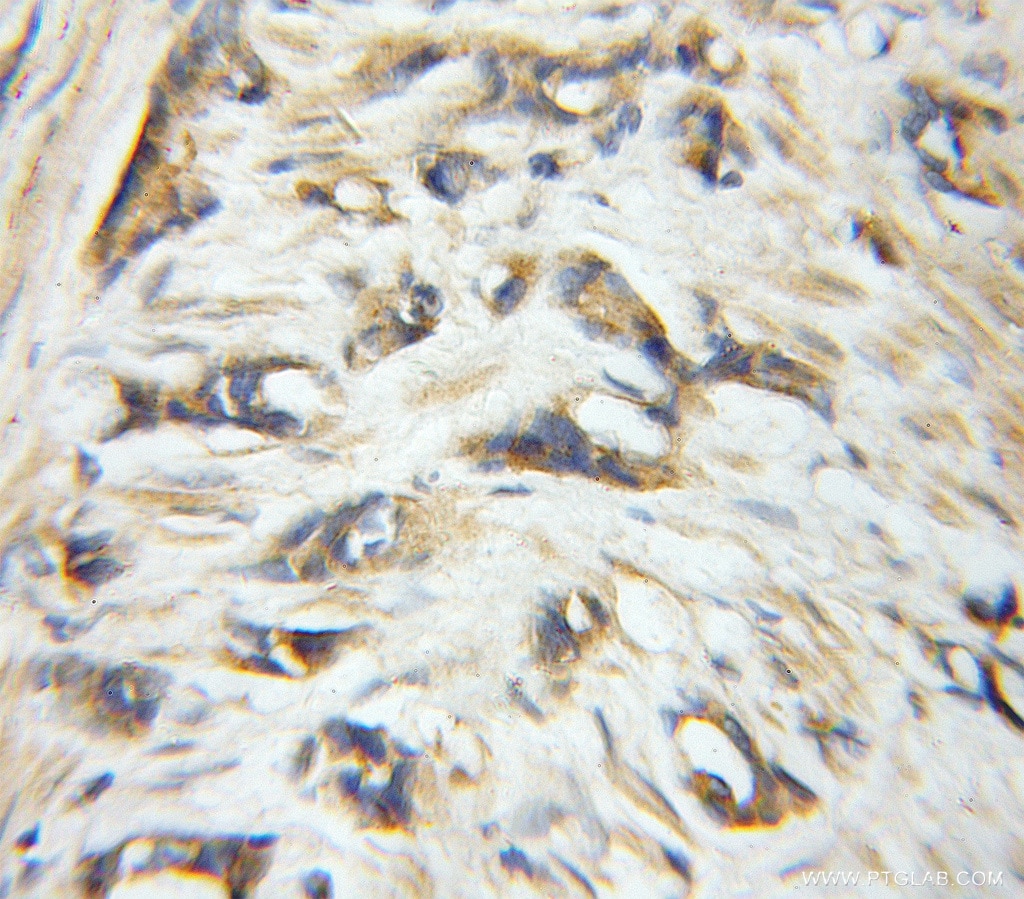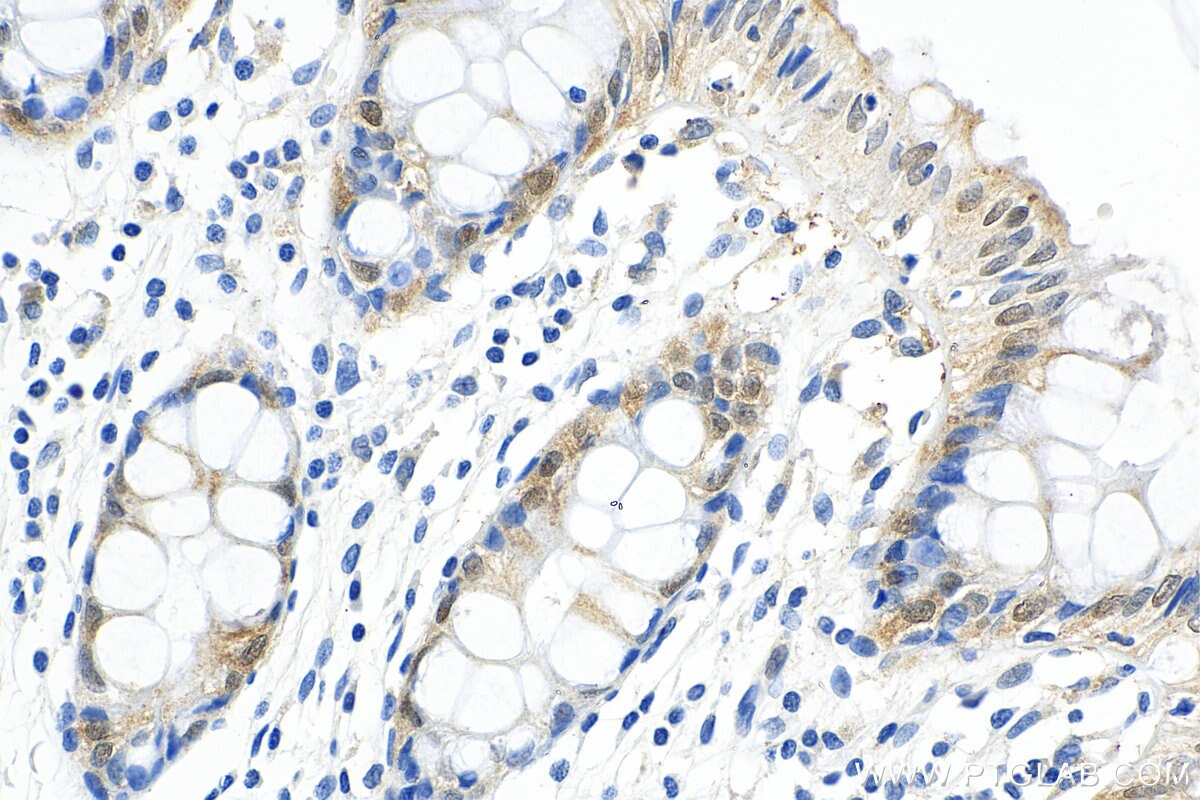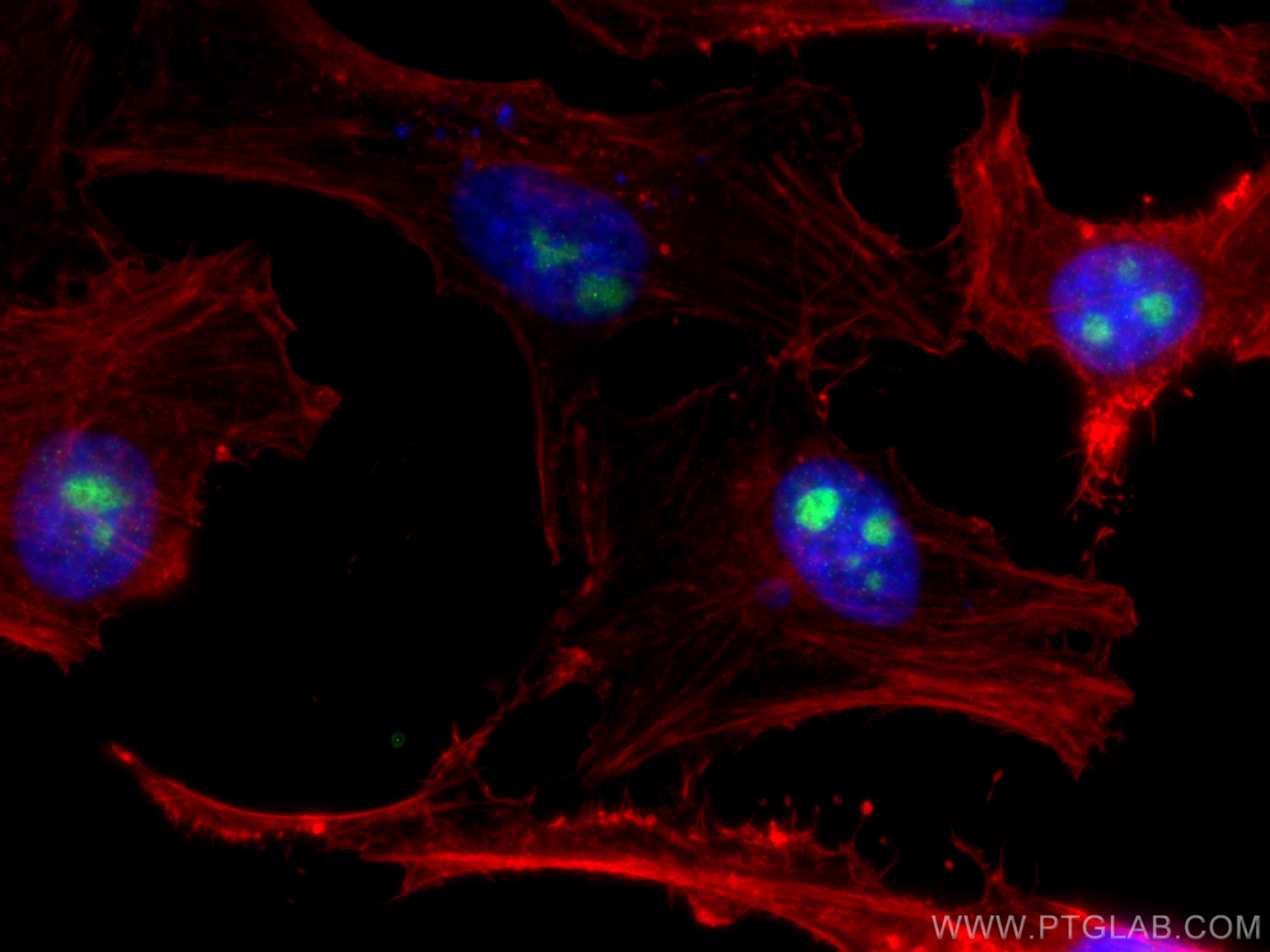- Phare
- Validé par KD/KO
Anticorps Polyclonal de lapin anti-EIF6
EIF6 Polyclonal Antibody for WB, IF, IHC, ELISA
Hôte / Isotype
Lapin / IgG
Réactivité testée
Humain, souris
Applications
WB, IHC, IF/ICC, ELISA
Conjugaison
Non conjugué
N° de cat : 10291-1-AP
Synonymes
Galerie de données de validation
Applications testées
| Résultats positifs en WB | cellules A375, cellules COLO 320, cellules HeLa, cellules HepG2, tissu hépatique de souris |
| Résultats positifs en IHC | tissu de cancer de la prostate humain, tissu de côlon humain il est suggéré de démasquer l'antigène avec un tampon de TE buffer pH 9.0; (*) À défaut, 'le démasquage de l'antigène peut être 'effectué avec un tampon citrate pH 6,0. |
| Résultats positifs en IF/ICC | cellules HeLa, |
Dilution recommandée
| Application | Dilution |
|---|---|
| Western Blot (WB) | WB : 1:2000-1:16000 |
| Immunohistochimie (IHC) | IHC : 1:20-1:200 |
| Immunofluorescence (IF)/ICC | IF/ICC : 1:50-1:500 |
| It is recommended that this reagent should be titrated in each testing system to obtain optimal results. | |
| Sample-dependent, check data in validation data gallery | |
Applications publiées
| KD/KO | See 1 publications below |
| WB | See 6 publications below |
Informations sur le produit
10291-1-AP cible EIF6 dans les applications de WB, IHC, IF/ICC, ELISA et montre une réactivité avec des échantillons Humain, souris
| Réactivité | Humain, souris |
| Réactivité citée | Humain |
| Hôte / Isotype | Lapin / IgG |
| Clonalité | Polyclonal |
| Type | Anticorps |
| Immunogène | EIF6 Protéine recombinante Ag0324 |
| Nom complet | eukaryotic translation initiation factor 6 |
| Masse moléculaire calculée | 27 kDa |
| Poids moléculaire observé | 27 kDa |
| Numéro d’acquisition GenBank | BC001119 |
| Symbole du gène | EIF6 |
| Identification du gène (NCBI) | 3692 |
| Conjugaison | Non conjugué |
| Forme | Liquide |
| Méthode de purification | Purification par affinité contre l'antigène |
| Tampon de stockage | PBS avec azoture de sodium à 0,02 % et glycérol à 50 % pH 7,3 |
| Conditions de stockage | Stocker à -20°C. Stable pendant un an après l'expédition. L'aliquotage n'est pas nécessaire pour le stockage à -20oC Les 20ul contiennent 0,1% de BSA. |
Informations générales
p27(BBP/eIF6) is an evolutionarily conserved protein that was originally identified as p27(BBP), It functions as an interactor of the cytoplasmic domain of integrin 4 and as the putative translation initiation factor eIF6. p27BBP is found in two pools: one nuclear pool enriched in the perinucleolar region, and one cytoplasmic pool. p27BBP binds to the fibronectin type III domains of integrin 4 subunit (ITGB4), an important functional component of hemidesmosomes, and help link ITGB4 to the intermediate filament cytoskeleton. In vitro and in vivo studies demonstrated that p27BBP is essential for cell viability and has a primary function in the biogenesis of the 60S ribosomal subunit. p27BBP protein is increased in rapidly cycling cells and decreased in villous cells committed to apoptotic cell death. In dysplastic colorectal adenomas and carcinomas, p27BBP displayed a large increase of its nucleolar component and was associated with the nuclear matrix. In particular, p27BBP increased progressively from adenomas to carcinomas and was related to the tumor stage.
Protocole
| Product Specific Protocols | |
|---|---|
| WB protocol for EIF6 antibody 10291-1-AP | Download protocol |
| IHC protocol for EIF6 antibody 10291-1-AP | Download protocol |
| IF protocol for EIF6 antibody 10291-1-AP | Download protocol |
| Standard Protocols | |
|---|---|
| Click here to view our Standard Protocols |
Publications
| Species | Application | Title |
|---|---|---|
Cell Stem Cell HectD1 controls hematopoietic stem cell regeneration by coordinating ribosome assembly and protein synthesis. | ||
Biochem Biophys Res Commun Mitochondrial function is impaired in yeast and human cellular models of Shwachman Diamond syndrome. | ||
Pediatr Blood Cancer Impaired growth, hematopoietic colony formation, and ribosome maturation in human cells depleted of Shwachman-Diamond syndrome protein SBDS. | ||
Evid Based Complement Alternat Med Protective Effects of Scutellarin on Human Cardiac Microvascular Endothelial Cells against Hypoxia-Reoxygenation Injury and Its Possible Target-Related Proteins. | ||
